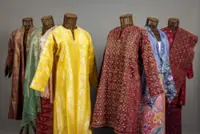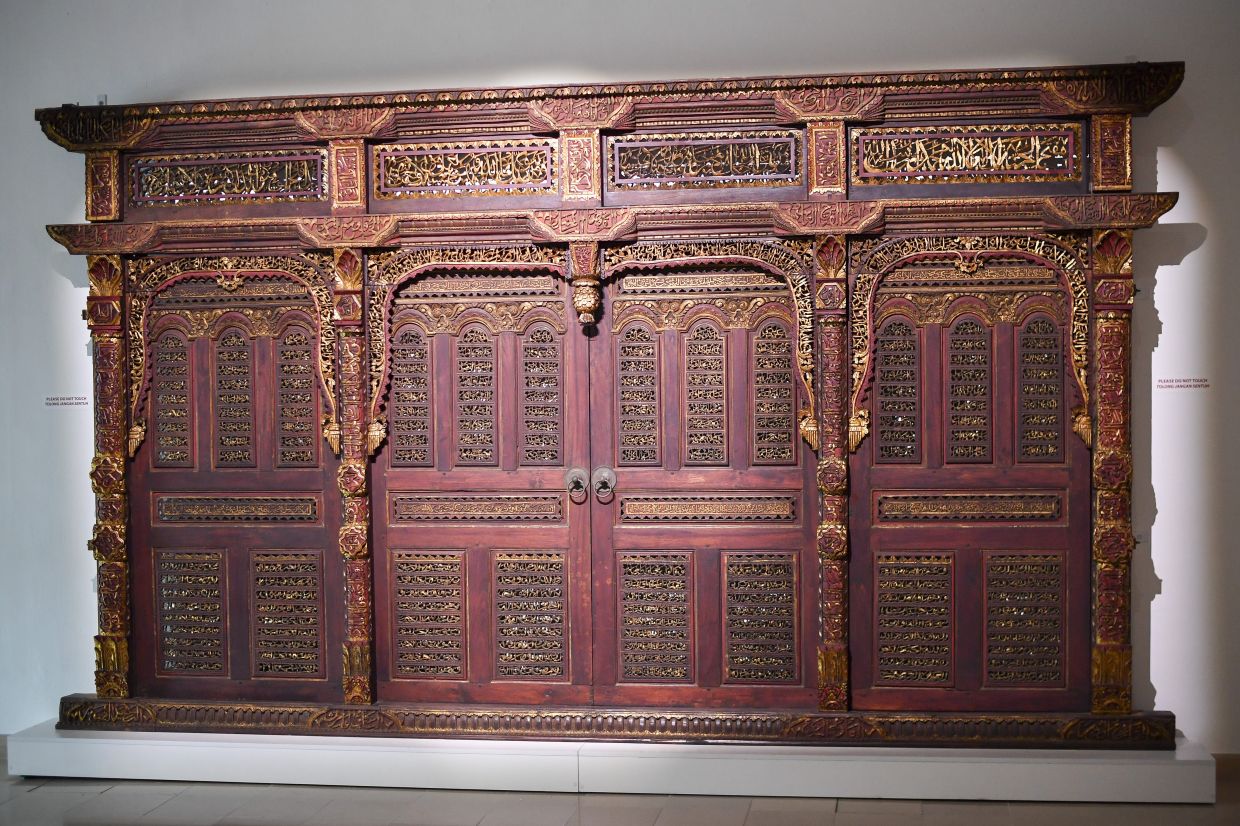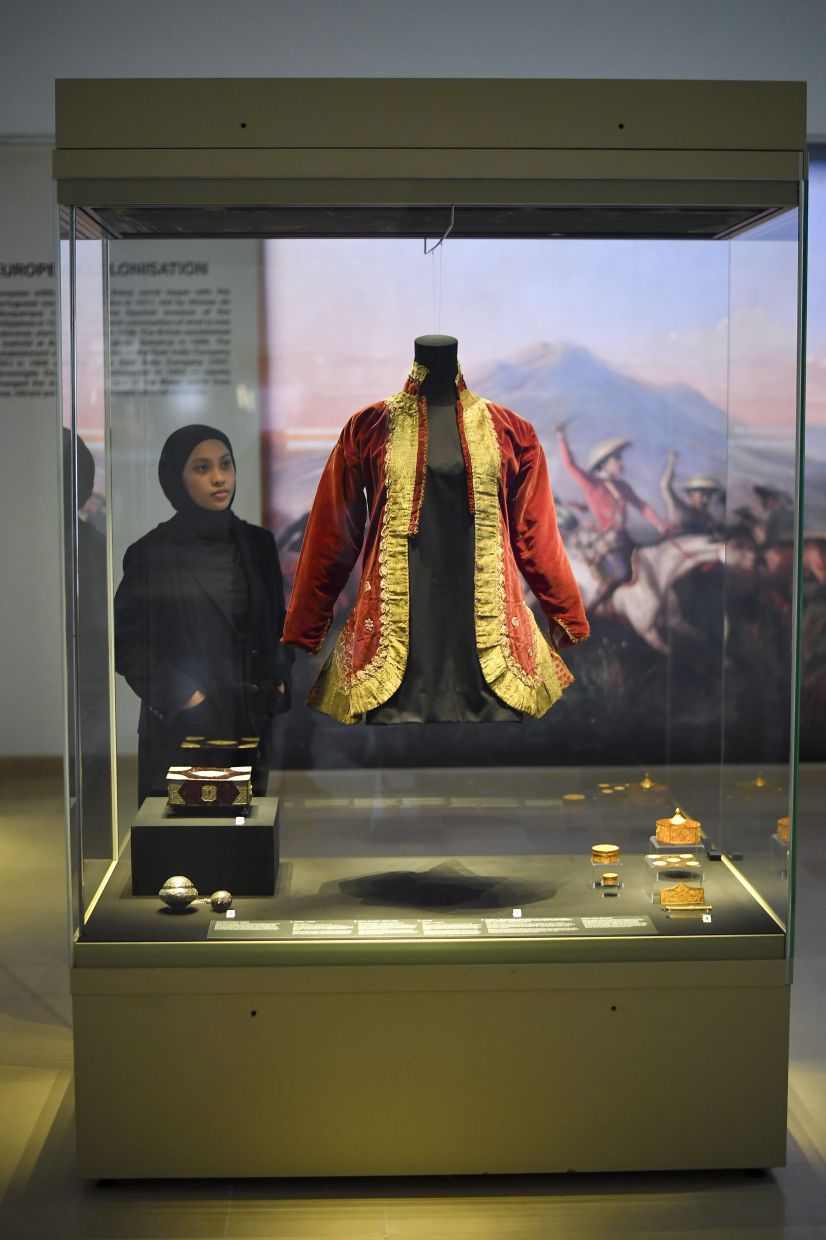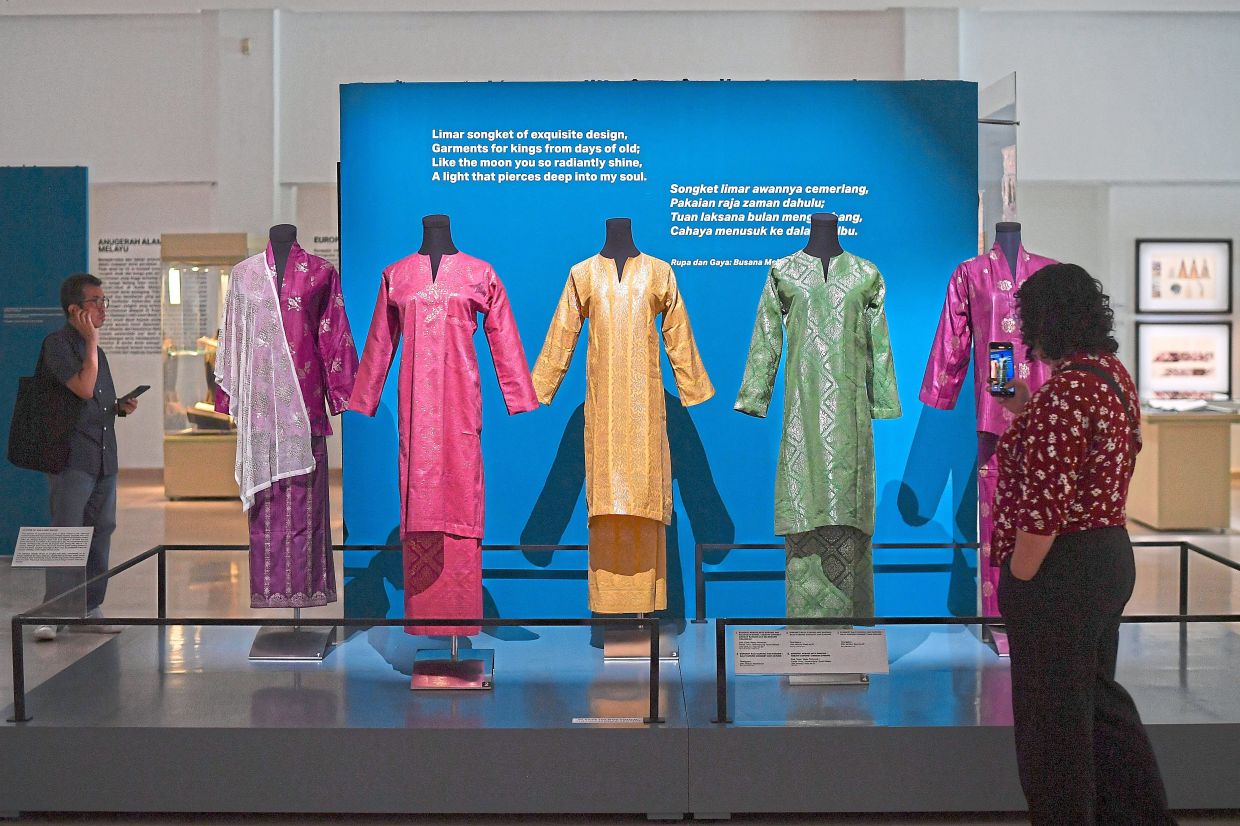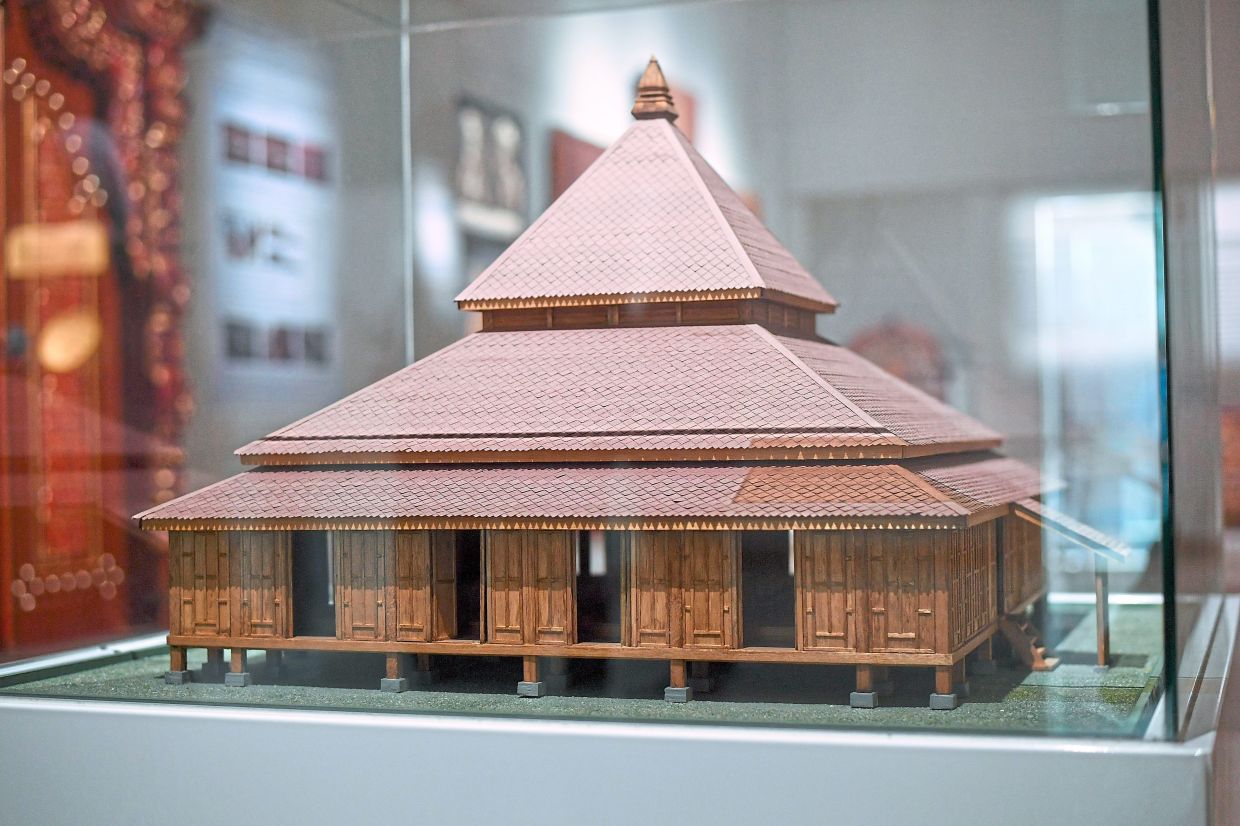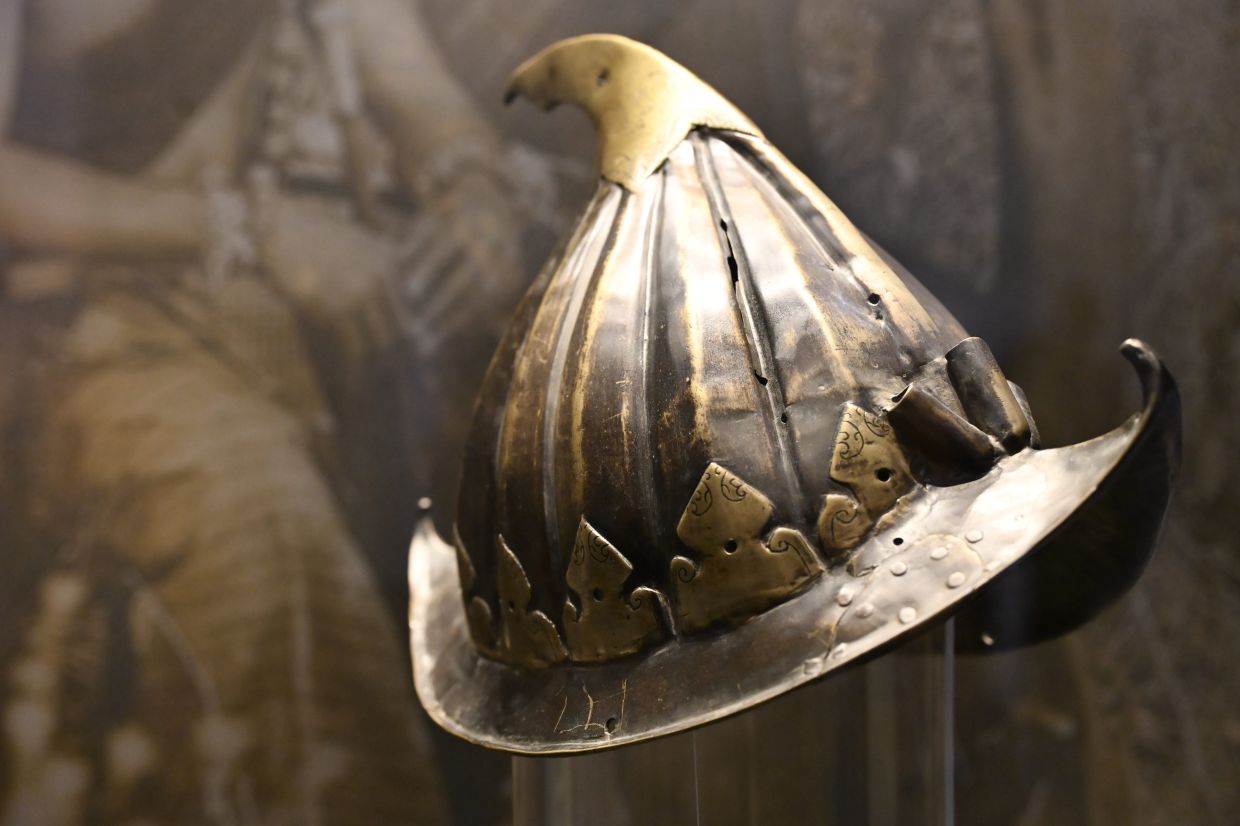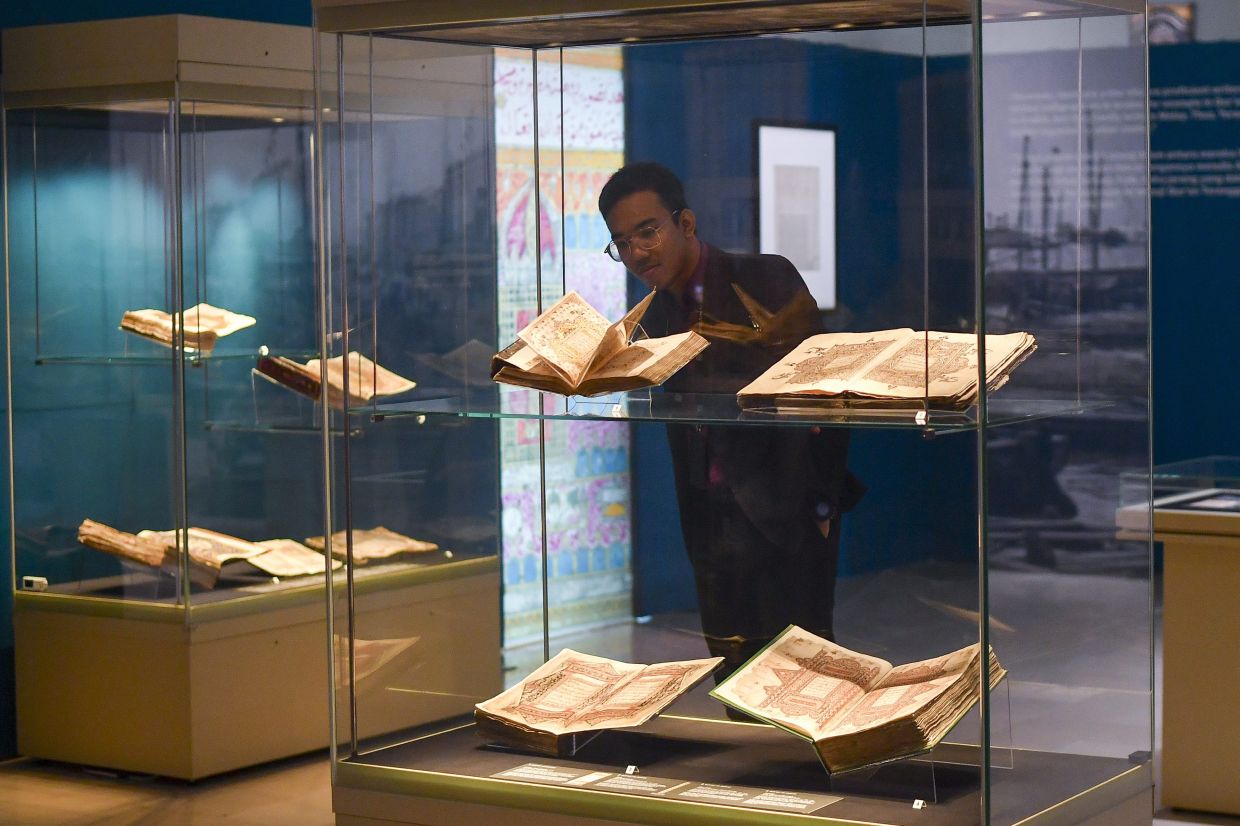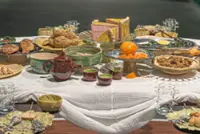An exhibit of traditional weapons, including the Tumbuk Lada (centre) – a small weapon designed for close-range attacks – on show at the 'Oceans That Speak' exhibition, which features more than 100 artefacts. Photo: The Star/Izzrafiq Alias
It's almost unimaginable now, but there was a time when bustling ports and open seas were the lifeblood of cultural and spiritual exchange. Centuries ago, the Malay Peninsula stood as a thriving crossroads where traders, scholars, and artisans converged, shaping the course of history.
The Islamic Arts Museum Malaysia (IAMM) in Kuala Lumpur is highlighting this historic era with its new exhibition Oceans That Speak: Islam And The Emergence Of The Malay World.
This insightful show, running through June 15, reveals how maritime trade became the driving force behind the spread of Islam and left an indelible mark on the cultural evolution of the Malay Peninsula and its surrounding archipelagoes.
“The exhibition’s narrative begins with the spread of Islam and the introduction of the Jawi script, followed by mapping routes and boundaries, the rise of port cities and trade, the cosmopolitan Malay world, and the networks of ‘ulama’ (religious scholars). It then explores European colonisation and concludes with the enduring Islamic influences and traces of the pre-Islamic era,” says Siti Marina Mohd Maidin, the exhibition’s lead curator.
The Oceans That Speak exhibition, which was planned nearly four years ago, presents an array of artefacts, manuscripts, letters, textiles, ceramics, and artworks, each piece offering a glimpse into the interconnected worlds of culture, spirituality, and commerce that shaped the Malay Peninsula.
The collection, comprising over 100 artefacts, traces trade routes and narratives spanning present-day Malaysia, Indonesia, Brunei, Singapore, Thailand, the Philippines, China, India, Saudi Arabia, and Turkey.
“The spread of Islam to this region was a multifaceted process, involving Muslims from diverse ethnic backgrounds – from the Hijaz and the land of Tarim to the Indian subcontinent and even China – each contributing to the rich and varied Islamic cultural landscape of the Malay world,” she adds.
The age of trade
For a glimpse into the Malay world before the arrival of European powers, IAMM curatorial team members Izuan Fadzli and Dalia Mohamed also offered invaluable insights, explaining the exhibition’s storyline and the significance of each artefact within its historical context.
“In the 13th century, the ocean served as a grand stage for travelers from across the globe – a meeting point for cultures that had never before intersected. The artefacts on display here reveal how Islam, alongside other influences, became deeply woven into Malay-Islamic art and daily life,” says Izuan, who also curated the museum’s permanent “Malay World Gallery”.
Situated between the South China Sea and the Indian Ocean, the Malay world has long been a vital hub of international trade, particularly during the Spice Route era. Strategic ports like Melaka emerged as bustling crossroads where traders from diverse regions converged.
“Many religious scholars from the Indian subcontinent and the Arabian Peninsula spent extended periods in the Malay world, advising local leaders and spreading Islam to regions such as Aceh and the East Coast, including Terengganu,” he explains, gesturing towards a manuscript, believed to feature the oldest known Malay interlinear translation in Jawi script.
A lasting legacy
At the beginning of the exhibition, the “Gebyok”, a 19th-century Javanese entrance gate or partition, serves as a prime example of this era of transformation in architecture, where Quranic verses began to be intricately carved into wood.
“What I find fascinating about this design, aside from its ability to provide ventilation through the gaps in the calligraphy – a practical feature for South-East Asia’s climate – is the choice of verse: Surah Al-Fatihah. For Muslims, this verse is recited in every prayer, so the artisan who crafted this piece was particularly creative in emphasising its significance,” says Dalia, who is also an Arabic researcher at IAMM.
A display of Chinese porcelain plates featuring Arabic script also highlight the fascinating fusion of cultures along ancient trade routes. These pieces not only showcase the artistry of their makers but also symbolise the spread of Islam, blending Eastern craftsmanship with Islamic spirituality.
Another section of the exhibition focuses on Malay culture and the ways in which travellers began to adopt its influences. The trade in spices and textiles symbolised the deep ties of the Malay Archipelago with global markets. These goods not only filled treasure chests with wealth but also carried stories, art, and knowledge across the seas, leaving an indelible mark on the region’s cultural fabric.
“In port cities, there was a strong demand for textiles from India, particularly from Gujarat and the Coromandel Coast,” says Izuan.
“However, the Malays developed their own distinct preferences when it came to design. This is where we start to see local motifs, like ‘pucuk rebung’ – a pattern commonly found in batik and songket – appear in foreign textiles, such as Indian patola,” he adds, pointing to the collection of garments and accessories displayed in the gallery.
The exhibition, featuring the IAMM collection, also showcases spices and a detailed map of the Spice Trade Route, a network facilitating trade between Asia, the Middle East, Africa, and Europe.
“One of the key reasons the Dutch and British fought to control the trade routes in the Malay world was its wealth of natural resources,” explains Dalia.
“As shown on the map, islands with significant economic value are marked with their key products, particularly sandalwood and cloves. For instance, the modern-day Nusa Tenggara region, including the island of Sumba and the Sumba Strait between Sumbawa and Sumba Islands, is marked for its sandalwood. Meanwhile, the cluster of islands around Amboina in the Banda Sea, part of the Moluccas Islands, is marked as the Clove Islands due to their major production and export of the spice,” she adds.
The exhibition then transitions into the era of colonialism, showcasing an array of weapons and armour, with muskets shown as symbols of conquest, and the changing tides during this period.
For history enthusiasts and visitors alike, the IAMM is offering guided tours for the Oceans That Speak exhibition. An accompanying publication has been also been released, alongside a monthly series of related programmes.
Oceans That Speak: Islam And The Emergence Of The Malay World is showing at the Islamic Arts Museum Malaysia in Kuala Lumpur until June 15.


